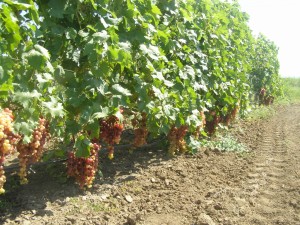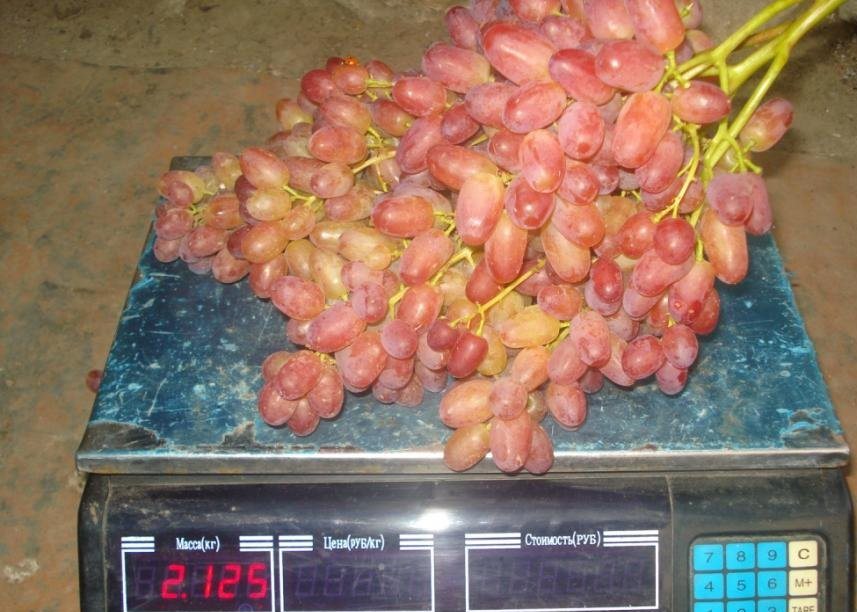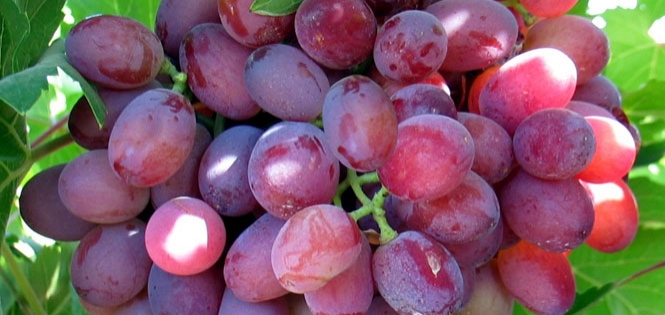Veles grape - early seedless nutmeg variety
Today, seedless grape varieties are becoming increasingly popular among winegrowers. Despite the fact that these species were known in antiquity, only now they have become widespread. Breeders breed new species every year. One of the latter, which was bred relatively recently, is the Velez grape. It is this grape variety that our article will be devoted to.
Description of the variety
The Veles grape variety was bred by crossing the Rusbol and Sofia varieties. It was first obtained in the city of Zaporozhye, in Ukraine from the breeder V.V. Zagorulko. He also gave the first description.
The Velez grape is a hybrid form of seedless grape. The plant is classified as an early ripening variety (about 100 days elapse between the budding process and fruit ripening).
The vine is characterized by a very high growth rate. Its ripening proceeds well along the entire length of the shoot. The maximum eye load per bush is about 35 eyes.

Flowers, in numbers from two to four, are formed on one vegetation shoot. For the Veles variety, hermaphrodite or bisexual flowers are described, which contain both stamens and pistils.
Despite the fact that in such a situation pollination of flowers is sufficient, additional pollination is necessary to improve fertility - it can increase yields by 20%.
The bunch of grapes is very large in size and can reach up to 2 kg in weight. The bunches can be tapered or cylindrical. They are very branchy.
Given the characteristics of the variety, Veles is the most preferred type of grape, which is suitable for growing in the temperate climate of Belarus, Ukraine and Russia.

The berries are arranged in clusters with medium density or friability. They have an oval shape. Their mass varies and is, on average, about 5 g. The peel of the fruit is pink and of medium thickness. When eating, it is not felt. In the world, the fruits acquire amber transparency, which gives an extraordinary aesthetic appearance to the entire bunch. The flesh of the berries is dense with a pronounced nutmeg flavor. Sometimes in the pulp come across rudiments of seeds in the form of soft bones. They are almost invisible during meals.
With high humidity, the berries crack and rot. In dry and sunny weather, without a loss of taste, the bunches dry out or become salty, they can stay on the bush for up to 45 days. The bunches sit very strongly on the bush and you need to make an effort to separate them from the vine.
Growing conditions
Reproduction of grapes occurs with the help of cuttings harvested in the fall or purchased seedlings. After planting, that cuttings, that seedlings take root perfectly.
If you decide to purchase seedlings, then you should know that they are sold both grafted and rooted. Veles is one of the unpretentious varieties to care for.
In order to increase yields, accelerate the ripening process of fruits, increase the size of the bunch and improve the taste of berries, spring pruning is carried out.
Pruning for fruiting is carried out in six or eight eyes. You can find information that this pruning can be carried out for more.

Since this species is characterized by a fairly high frost resistance (up to -21), it does not need to be covered for the winter. But experienced growers advise that it will not hurt to cover the grape bush for the winter with a film.
High humidity and frequent precipitation during the summer can lead to a decrease in the palatability and transportable qualities of the fruit.
Characteristics
High productivity is characteristic. The plant bears fruit stably every year. Fruit ripening occurs by the beginning of October. At the same time, you can start harvesting the main crop outdoors in early August.
It is inclined to form stepchildren on the same shoots where the bunches are formed. Stepson also bear fruit, but they ripen by mid-autumn.
It is an early ripe variety and has two harvest waves: in August and in autumn.

The plant has high frost resistance and a fairly high resistance to most diseases (downy mildew, mildew, oidium and other fungal diseases). It tolerates both transportation and storage, thanks to its dense and elastic pulp.
Video "Veles grapes"
In this video you can visually familiarize yourself with the characteristics of this grape variety.
This type of grape is most suitable for growing in a temperate climate zone. A number of characteristics put the Veles variety in one of the first places. Growing this grape is suitable for any home garden.
